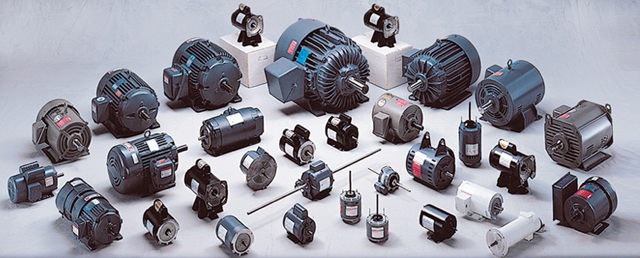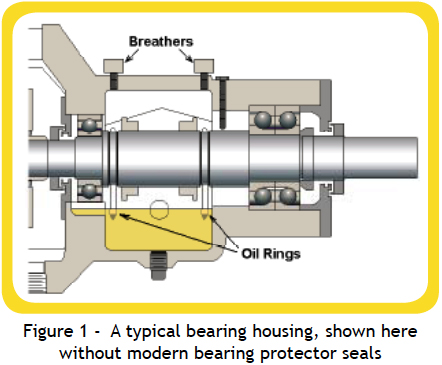
Guide to Electric Motor Bearing Lubrication
Guide to Electric Motor Bearing Lubrication
The proper lubrication of electric motor bearings is essential to maintaining them in peak operating condition and, ultimately, in reducing unnecessary downtime. This bulletin, for Applied thermal fluids customers, is intended to serve as a practical guide to the proper lubrication of electric motor bearings utilizing grease as a lubricant. It can help you to apply Applied thermal fluids’s years of lubrication experience with that of bearing and motor manufacturers from around the world to provide you with a guide to the proper lubrication of electric motor bearings.
Electric Motor Grease Lubrication
Grease is frequently used as an electric motor bearing lubricant because of its simplicity of application and unique characteristics. The primary functions of an electric motor bearing grease are to:
• Reduce friction and prevent wear
• Protect bearings against corrosion
• Act as a seal to prevent entry of contaminants
Grease is a semi-solid lubricant composed of a base oil, a thickener and additives. These components are combined in complex chemical reactions under controlled temperatures and pressures. The base oil used in greases may be mineral or synthetic. Mineral oils are adequate for most electric motor bearing applications. However, synthetic base oils may be required for extreme temperature applications or where longer re-greasing intervals are desired. The thickener primarily serves as a carrier for the oil and prevents it from leaking out of the application. Some common thickeners include metallic soaps that can be composed of calcium, lithium, sodium, aluminum or barium and complex metallic soaps such as lithium-complex. A thickener increasingly employed in electric motor bearing lubrication is polyurea. Polyrex EM utilizes a polyurea thickener. As with many lubricating oils, additives are frequently used to impart special properties to the grease. Commonly used additives include, corrosion inhibitors, antiwear or extreme pressure agents, oxidation and corrosion inhibitors, pour point depressants, lubricity agents, and dyes or pigments.
Choosing the Right Electric Motor Grease
Important Grease Characteristics for Electric Motor Bearings
The following criteria may be used as typical indicators of a good electric motor grease:
• Viscosity: Oil viscosity should be appropriate for the load and speed of the application at operating temperature. Technical Topic Guide to Electric Motor Bearing Lubrication This will help to insure maximum protection and component life. The typical mineral oil viscosity in an electric motor grease is in the range of 500 to 600 SUS at 100°F. Your electric motor builder may provide a specific recommendation.
• Consistency: A grease’s consistency is one of its most visible characteristics. A grease’s consistency or firmness is stated in terms of its NLGI (National Lubricating Grease Institute) grade, which ranges from 000 to 6. The consistency of a grease should be appropriate to the application, as it affects pumpability and ability to reach the areas to be lubricated. A NLGI 2 grade grease is the most commonly used in electric motor applications.
• Oxidation Resistance: Electric motor greases should have outstanding resistance to oxidation. This extends the life of bearings running at high speeds and high temperatures. ASTM D 3336 High Temperature Grease Life test results give a good indication when operating under extreme conditions. Choose a grease with a high ASTM D 3336 oxidation life.
• Anti-Wear: Unless a motor is mounted so there is a thrust load on the bearings, it is generally advisable to use a grease without extreme pressure (EP) additives. EP additives can shorten the life of the grease and should not be recommended where they are not needed. On the other hand, bearings designed to handle heavy thrust loads may require a grease with an EP additive.
• Dropping Point: The dropping point gives an indication of the temperature at which the grease will melt or the oil will separate from the thickener. Due to the high temperatures that can be reached in an electric motor bearing, a grease with a high dropping point is frequently desirable. Lithium complex greases and polyurea-thickened greases both have dropping points of approximately 500°F or higher.
• Shear Stability: ASTM D 217 Cone Penetration of Lubricating Grease test measures the consistency of the grease after it has been worked 100,000 strokes. An electric motor bearing grease should soften no more than 1 to 1.5 NLGI grades in this test. An electric motor bearing grease that softens more than that may leak out of the bearing with age.
Electric Motor Grease Compatibility
With some exceptions, greases with different types of thickeners should be considered incompatible with each other. We recommend running grease compatibility tests if mixing different greases is unavoidable. Generally, incompatible greases will soften or become fluid. This can result in lack of lubrication and can lead to premature bearing failure. However, stiffening may occur and can also lead to a lack of lubrication. Always purge as much of the old grease as possible, and then regrease more frequently to purge all the old grease out of the bearing.
Related Articles:
Learn How We Can Help Your Company Succeed and Grow!
- Post published:September 20, 2015
- Post category:Grease Lubrication
- Post comments:0 Comments



